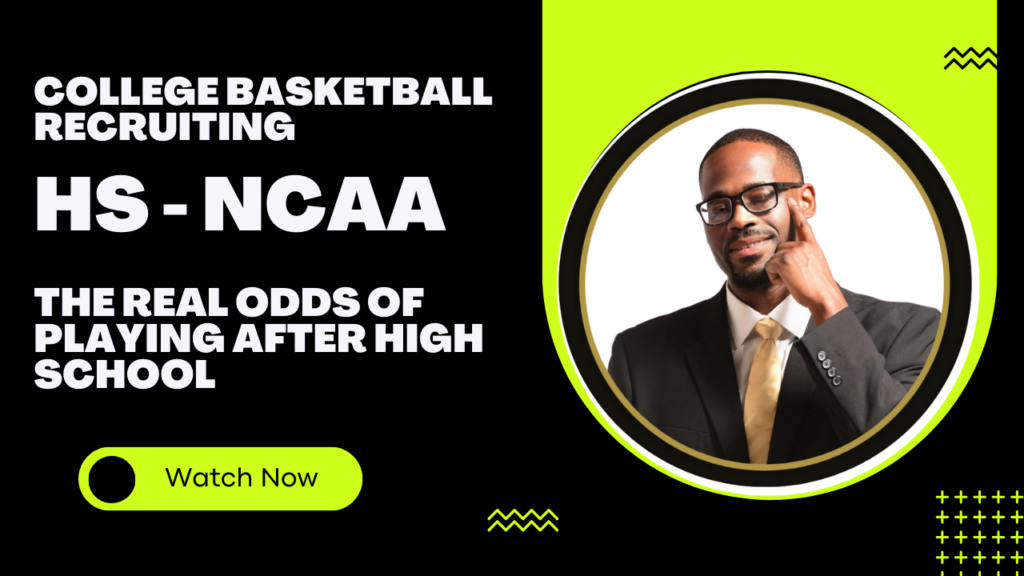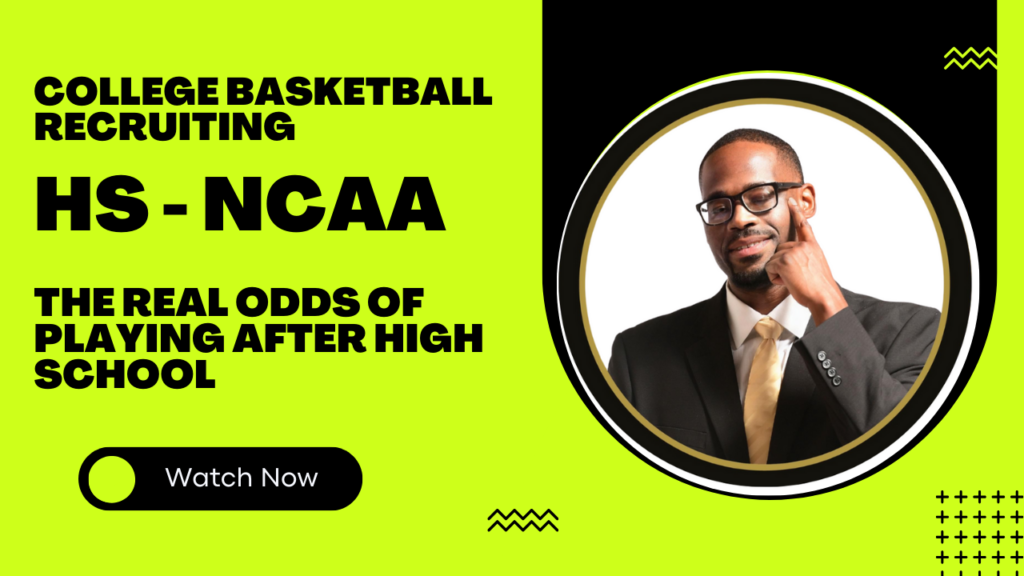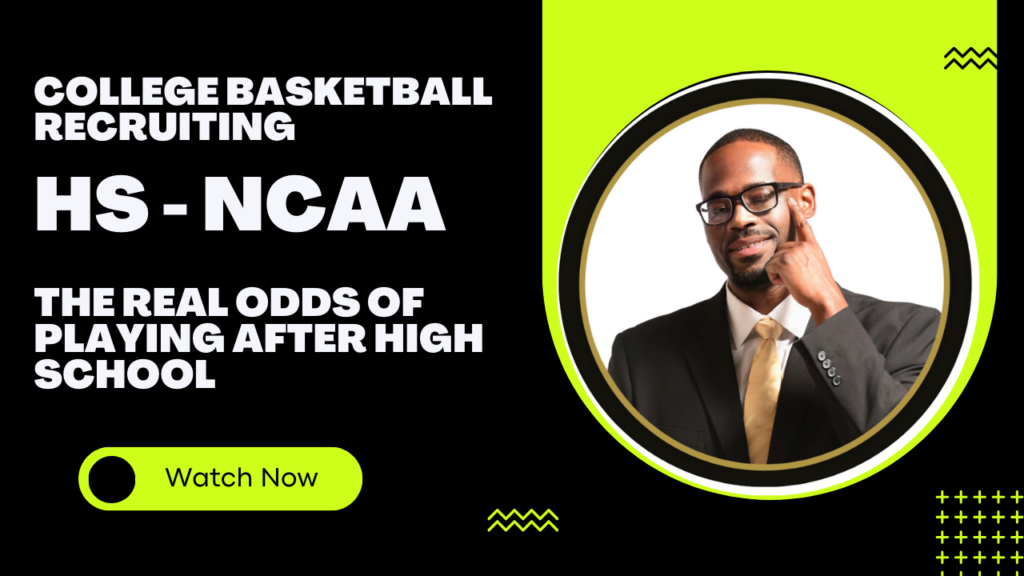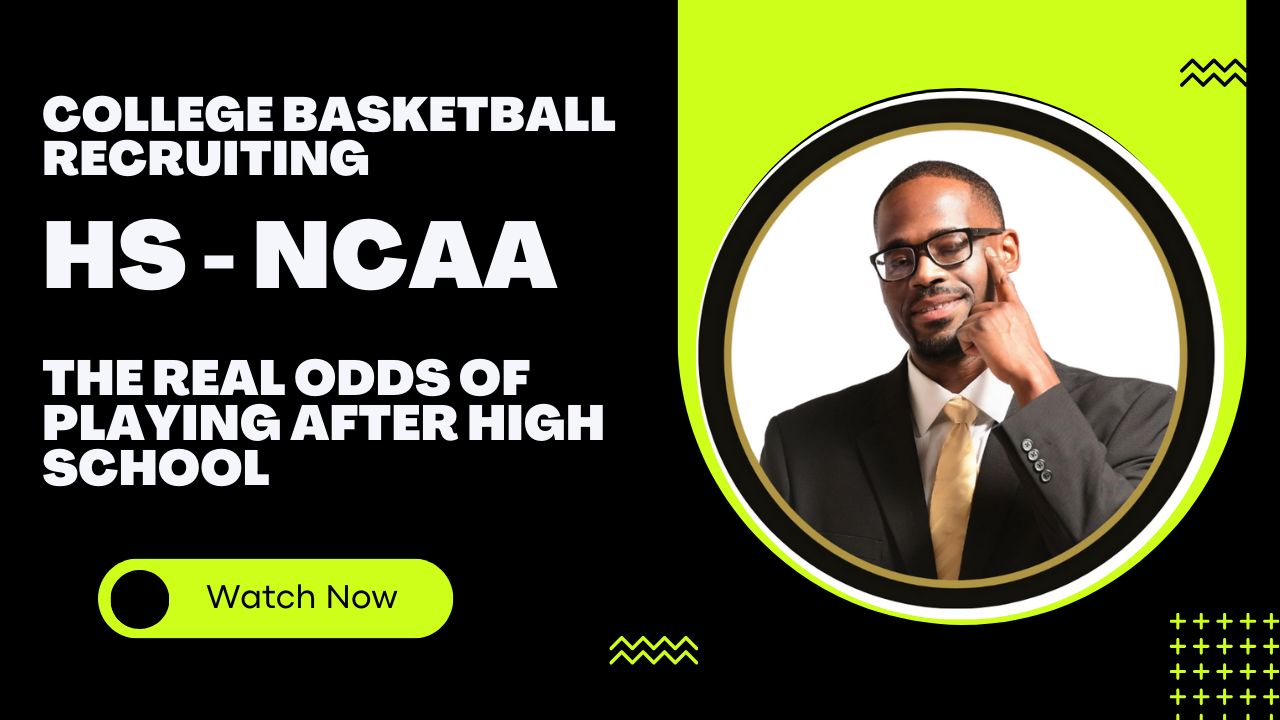The High School to College Hoops Pipeline: A Numbers Game
WHAT PERCENTAGE OF HIGH SCHOOL BASKETBALL PLAYERS PLAY IN COLLEGE? The Harsh Truth About College Basketball Recruiting: By the Numbers
Ever fantasized about sinking the game-winning shot in a packed college arena? You’re not alone.
Every kid who’s ever dribbled a basketball has envisioned themselves playing at the collegiate level.
But the path to that dream is a narrow one, paved with fierce competition and some brutally honest statistics.
Let’s dive into the numbers and explore what it really takes to make it to the next level.
The Brutal Reality: It’s a Numbers Game
Don’t get discouraged, but the odds of playing college basketball are slim.
Out of the staggering 551,373 high school men’s basketball players, only a meager 3.6% will ever experience the thrill of NCAA competition. That’s roughly 20,000 players nationwide.
Even more daunting, only a fraction of that 3.6%—a mere 1%—will secure a coveted spot on a Division I roster.
Think about it: out of 1,000 aspiring high school ballers, only about 36 will make it to any level of college basketball, and a mere ten will be playing under the bright lights of Division I.
While these numbers may seem disheartening, they serve as a wake-up call. The journey to college basketball requires more than just raw talent; it demands a strategic, focused approach.

Beating the Odds: It Takes More Than Talent
So, how can you defy the odds and become one of the few who make it? Here’s the breakdown:
- Academic Excellence is Non-Negotiable: College coaches aren’t just looking for athletes; they want well-rounded student-athletes who excel both on and off the court. A stellar GPA and impressive standardized test scores open doors to more colleges and increase your chances of receiving academic scholarships—a major deciding factor for many coaches.
- The Proof: A study by the National Collegiate Athletic Association (NCAA) found that student-athletes who participate in post-graduate programs, which often focus on academic improvement, have a significantly higher average GPA (3.2) compared to those who go straight to college (2.9). This academic edge can be a major differentiator when competing for limited roster spots.
- Exposure: Get Seen, Get Recruited
If you’re a hidden gem playing in a small town or for a less competitive high school, you need to put in the extra effort to get noticed.
Think of yourself as a brand – you need to market your skills to the right audience.
Ditch the AAU Grind: A Bold New Strategy for College Basketball Recruiting
Let’s be brutally honest: the traditional path to college basketball recruiting is broken.
Endless AAU tournaments, expensive camps, and chasing after elusive exposure rarely yield the results you crave. It’s time for a new playbook, one that prioritizes strategic development, personal branding, and targeted networking.
Forget the Hype: Why AAU and Camps Aren’t Enough
Don’t get me wrong, AAU and camps have their place.
They can be fun, competitive, and a chance to showcase your skills.
But they’re also overcrowded, expensive, and often fail to deliver on their promises of college exposure.
Coaches are bombarded with information overload, making it harder than ever for your talent to stand out in the sea of aspiring athletes.
The truth is, college recruiting is a business, and scholarships are a finite resource.
Coaches aren’t just looking for raw talent; they’re looking for a sure bet – a player who fits their program’s needs, culture, and playing style.
So, how do you become that sure bet?

The New Playbook: Your 4-Step Blueprint for Success
- Invest in Your Brand: Think of yourself as a company with a unique product to offer: your basketball skills and potential.
- Personalized Evaluation: Start by getting a comprehensive evaluation from a trusted source. This will help you identify your strengths, weaknesses, and areas for improvement.
- Targeted Training: Develop a strategic training program that addresses your specific needs and prepares you for the demands of college basketball. This isn’t AAU anymore; you need to train like a college athlete, with a focus on skill refinement, strength and conditioning, and mental toughness.
- Cultivate the College Athlete Mindset:
- The Mental Game: Success in college basketball is as much about mental fortitude as it is about physical ability. Develop a growth mindset, embrace challenges, and learn from your mistakes.
- Discipline and Dedication: College athletes have to juggle academics, athletics, and a social life. Develop the discipline and time management skills necessary to excel in all areas.
- Coachability: Be open to feedback and willing to adapt your game to fit your coach’s system.
- Consider a Post-Grad Year:
- A Strategic Advantage: A fifth year at a reputable prep school can be a transformative experience. It offers a structured environment for skill development, academic support, and increased exposure to college coaches.
- Proof in the Pudding: According to the National Association of Basketball Academies (NABA), 56% of post-grad players receive some form of athletic scholarship. That’s a significant advantage over the 3.6% of high school players who go on to play NCAA basketball.
- Maximize Your Exposure:
- Targeted Networking: Don’t just blast your information to every college coach in the country. Do your research and identify programs that are a good fit for your skills and academic profile. Reach out to coaches directly, attend their camps, and build relationships with them.
- Create a Compelling Online Presence: Your online profile is your digital resume. Highlight your skills, accomplishments, and academic achievements. Use high-quality video footage and statistics to showcase your talent.
Find Your Perfect Fit: It’s Not Just About D1
Division I isn’t the only path to success.
There are numerous opportunities to play competitive basketball at the Division II, Division III, NAIA, and junior college (JUCO) levels.
These programs offer a range of academic options, scholarship opportunities, and a chance to compete at a high level.
The Options:
- Division II: Offers a balance of academics and athletics, with scholarships available.
- Division III: Emphasizes academics, with no athletic scholarships but other forms of financial aid available.
- NAIA: Similar to Division II, with a focus on smaller schools and a strong sense of community.
- JUCO: A two-year option that can help you develop your skills and academics before transferring to a four-year school.
The Data:
According to the NCAA, 88% of all college basketball players compete at the Division II or III levels, highlighting the vast opportunities available beyond Division I.
The Journey is the Reward
Remember, the path to college basketball is a marathon, not a sprint. While the numbers may seem daunting, they shouldn’t discourage you.
By understanding the realities of recruiting, focusing on your development, and making informed decisions, you can maximize your chances of success.
So, are you ready to defy the odds?
Embrace the challenge, put in the work, and never give up on your hoop dreams.
The journey itself can be just as rewarding as reaching the destination.
While Division I might be the most glamorous option, it’s not the only path to college basketball.
There are many opportunities to play at the Division II, Division III, NAIA, and junior college (JUCO) levels.
These programs can offer competitive basketball, excellent academic programs, and a chance to earn scholarships.
- Division II: Offers a balance of academics and athletics, with scholarships available.
- Division III: Emphasizes academics, with no athletic scholarships but other forms of financial aid available.
- NAIA: Similar to Division II, with a focus on smaller schools and a strong sense of community.
- JUCO: A two-year option that can help you develop your skills and academics before transferring to a four-year school.

FAQs: Your College Basketball Recruiting Questions, Answered
- What percentage of high school athletes play sports in college? Overall, about 7% of high school athletes go on to play a varsity sport in college.
- What is the hardest sport to get recruited for in college? Wrestling for men and volleyball for women have the lowest percentages of athletes receiving scholarships.
- What percentage of high school athletes play D1? Less than 2% of high school athletes go on to play at NCAA Division I schools.
- What percentage of high school basketball players play in college? Approximately 3% of high school basketball players go on to play college basketball at any level.
- What percentage of high school basketball players play D1? Only about 1% of high school basketball players go on to play NCAA Division I basketball.
The college basketball recruiting journey is a challenging but rewarding one.
By understanding the statistics, focusing on your development, and making informed decisions, you can increase your chances of achieving your hoop dreams.
Remember, the journey is just as important as the destination.
So, embrace the process, work hard, and never give up on your passion for the game.
